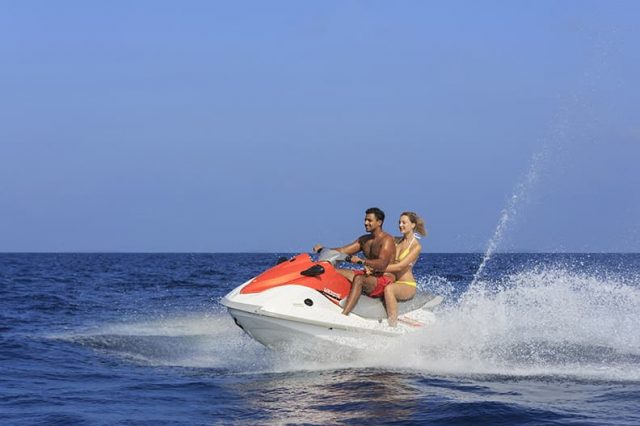Thrills galore
Because of its marine location, the Maldives boasts every kind of water-based adventure sport from paddling around a lagoon in a transparent hulled canoe to being propelled several metres below the surface of the sea by underwater scooter, or gliding several metres above the surface dangling from a parachute behind a speedboat. For the energetic and adventurous, the Maldives is just as rewarding a destination as it is for the laidback sun worshiper or sophisticated epicure.
With 99% of its territory being sea, the Maldives is one of the world’s leading watersports hubs with its environment of islands and turquoise blue waters forming the perfect combination for a natural watersports arena. All the resorts and the inhabited islands popular with tourists have a watersports centre of some kind, either with a fleet of windsurf boards, sails and other equipment, or just a couple of wakeboards.
Not all the resorts favour motorised watersports like jet skiing because of the pollution and noise disturbance to the serenity of the resort. On the other hand, many resorts support watersports like canoeing and paddle surfing because of their minimal effect on the peaceful environment. Some of the popular thrills to be had from adventure watersports are listed here.

